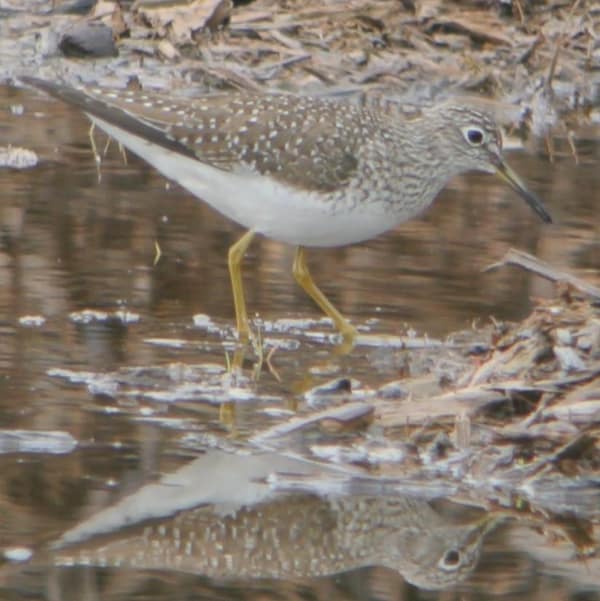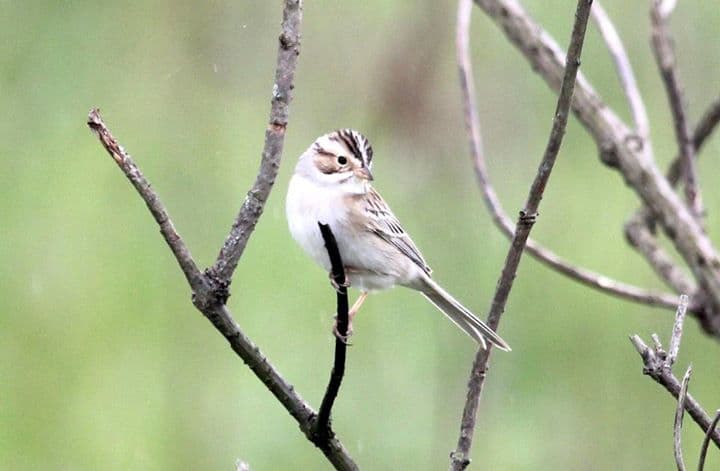Look For
The solitary sandpiper is a medium-sized shorebird with a dagger-shaped bill and lanky greenish-yellow legs. Its upperparts are a dark brown with heavy white spotting throughout. Its underparts are white with light brown streaking on its neck and flanks. Its tail has dark brown down the center with black and white barred edges. It has a white ring around its eyes and dull green legs.
Listen For
The solitary sandpiper’s typical call is a shrill, whistle-like pee-weet. When it is alarmed or warning others of danger its call is a short, sharp plik.
Find It
The solitary sandpiper lives in the northern parts of North America, specifically Canada and Alaska. There, it lives near substantial bodies of water including woodland streams, swamps, ponds, and flooded fields. It migrates south for the winter, crossing across most of the east and central parts of the United States before settling in Central America, the West Indies, and South America. There it stays near streams, pounds, rivers, and marshes.
Feeding Behavior
The solitary sandpiper feeds primarily on insects including beetles, grasshoppers and beetles. It also eats various small crustaceans, spiders, frogs, and worms. It forages by walking along shores and in shallow water, using its bill to probe the water and mud to snatch up prey.
Nesting Behavior
The solitary sandpiper uses nests built by various species of songbirds such as the American robin, gray jay, and rusty blackbird. The nest is usually in a conifer or spruce and can either be old and abandoned, or brand new. The solitary sandpiper female sometimes adds additional soft lining to the nest before laying an average of 4 eggs are a light green or yellow with brown markings. The eggs are likely incubated by both parents for 23 to 24 days before hatching. The young learn to fly and become reasonably independent after 17 to 20 days.




